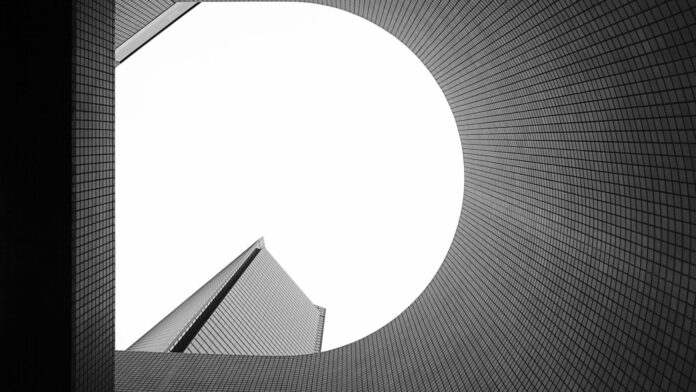In the swirling vortex of concrete jungles, where towering buildings scrape the sky and scorching sunlight bounces mercilessly off hardened surfaces, a hidden menace thrives. Behold, the urban heat island phenomenon, where cities morph into veritable cauldrons of oppressive heat, spreading discomfort and posing a serious threat to the health of their inhabitants. But fear not, for the power of nature’s green embrace holds the key to an extraordinary solution. Through the enchanting dance between urbanization and green infrastructure, a new dawn arises—a dawn that promises to combat the health risks of urban heat islands. In this article, we will embark on a mesmerizing journey, unearthing the magical potential of verdant spaces in transforming our concrete landscapes into havens of coolness and vitality. So buckle up and prepare to be spellbound by the captivating tale of how we can combat the health risks of urban heat islands with the mighty power of green infrastructure.
Introduction: Understanding the Impact of Urban Heat Islands on Public Health
As urbanization continues to reshape our cities, the phenomenon of urban heat islands has emerged as a pressing issue affecting public health. Urban heat islands refer to areas in cities that experience significantly higher temperatures than their surrounding rural areas. These pockets of excessive heat are caused by a number of factors such as dense buildings, lack of green spaces, and extensive use of concrete and asphalt.
The impact of urban heat islands on public health is multifaceted and poses a range of risks. Prolonged exposure to high temperatures can result in heat-related illnesses, including heat exhaustion and heatstroke. Vulnerable populations such as the elderly, children, and those with pre-existing medical conditions are particularly at risk. Moreover, the intensity of urban heat islands can exacerbate air pollution, leading to respiratory problems and cardiovascular diseases. It is crucial for cities to prioritize combating these health risks by adopting innovative approaches, such as implementing green infrastructure.

Examining the Role of Green Infrastructure in Mitigating Urban Heat Islands
As cities continue to expand and urbanization reaches unprecedented levels, the phenomenon of urban heat islands has become a pressing concern. These localized areas of heightened temperatures pose significant health risks to urban populations, further exacerbated by the effects of climate change. However, there is an emerging solution that holds immense promise in combating these risks – green infrastructure.
Green infrastructure refers to the strategic integration of natural elements such as trees, green roofs, and permeable surfaces into urban environments. By implementing green infrastructure initiatives, we can mitigate the harmful impacts of urban heat islands and create healthier, more sustainable cities. One key benefit is the reduction in surface temperatures. The shade provided by trees and green spaces significantly lowers the surface temperature, creating a more comfortable and liveable environment for residents and workers. Furthermore, green infrastructure enhances air quality by reducing pollutants and improving ventilation. These natural elements act as filters, trapping particulate matter and absorbing carbon dioxide, resulting in cleaner, fresher air.
- Green infrastructure helps in preventing the formation of heat islands by reducing the overall heat absorption capacity of urban surfaces.
- It also aids in lowering energy consumption by reducing the need for air conditioning, thereby reducing greenhouse gas emissions.
- Green roofs, in particular, provide additional insulation, reducing heat flux through buildings and minimizing the urban heat island effect.

Improving Health Outcomes: Recommended Strategies for Implementing Green Infrastructure in Urban Areas
Addressing Urban Heat Islands through Green Infrastructure
As urbanization continues to rapidly grow, so does the concern over urban heat islands and their detrimental effects on public health. Urban heat islands refer to the phenomenon where cities experience higher temperatures compared to surrounding rural areas due to human activities, such as the dense concentration of buildings, paved surfaces, and limited vegetation. These heat islands pose significant health risks, including heat-related illnesses, heat stroke, and exacerbation of respiratory conditions.
Thankfully, the integration of green infrastructure within urban areas provides a promising solution to combat the health risks associated with urban heat islands. Green infrastructure includes the strategic implementation of natural elements like parks, green roofs, trees, and permeable pavements. By incorporating these elements into city planning and design, several benefits can be achieved, ranging from lower ambient temperatures and improved air quality to decreased stormwater runoff and enhanced overall well-being of urban dwellers.
- Increasing tree canopy: Planting a diversity of trees throughout the city can significantly reduce the urban heat island effect by providing shade and evaporative cooling.
- Creating green roofs: The installation of green roofs not only insulates buildings, reducing the energy demand for cooling, but also helps mitigate the urban heat island by absorbing and evaporating heat.
- Implementing permeable pavements: Using permeable materials for road surfaces and sidewalks allows water to infiltrate, reducing runoff and consequently lowering local temperatures.
- Establishing urban parks and green spaces: Constructing parks and green spaces within urban areas not only enhances the aesthetic value, but also provides crucial cooling effects, recreational opportunities, and psychological well-being for residents.
| Benefits of Green Infrastructure in Combatting Urban Heat Islands |
|---|
| Lower ambient temperatures, reducing heat-related illnesses |
| Improved air quality through the absorption of pollutants |
| Reduced stormwater runoff, minimizing flooding risks |
| Enhanced overall well-being and quality of life for urban residents |
Key Takeaways
As the sweltering sun sets on the concrete jungle, it becomes all too clear that our beloved cities are not exempt from the repercussion of their own creation. Urban heat islands, once regarded as a distant issue, now knock relentlessly on our collective awareness. But fear not, for the dawn of a new era emerges amidst this scorching reality – one where health risks are mitigated by the miraculous powers of green infrastructure.
Like a refreshing breeze on a scorching summer’s day, green infrastructure breathes life into the barren landscapes of urbanization. In the face of relentless heat, buildings adorned with foliage and roofs kissed by cascading ivy create havens of respite and wellness. Cooling down the thermometers and lifting weary spirits, these green oases offer a sanctuary from the unforgiving grip of urban heat.
But this is not merely a revolution of aesthetics; it is a revolution of human well-being. The health risks spawned by urban heat islands are no longer brushed aside as mere inconveniences. No, they are pinnacles of concern that must be confronted head-on. Rising temperatures, amplified air pollution, and heightened mortality rates threaten to cast a somber shadow over our cities. However, armed with the formidable weapon of green infrastructure, we can protect ourselves against these looming threats.
Nature’s resilience and benevolence shine as we weave her magic into the fabric of our urban landscapes. Trees stretch their majestic arms towards the heavens, providing shade and purifying the air, a symphony of insects and birds fluttering in harmony with vibrant orchids and flowering vines. These green guardians stand as silent heroes, reducing surface temperatures through evapotranspiration and breaking the ceaseless cycle of hot, stagnant air. They embrace us with open arms, whispering gentle promises of coolness and tranquility.
But let us not forget that the power to transform lies not only in the hands of urban planners and architects. Each of us, as denizens of this sprawling metropolis, plays a vital role in shaping the future we so fervently desire. Whether it be tending to a humble potted plant on a windowsill or joining hands with community gardening initiatives, we can sow the seeds of change and cultivate a healthier, more sustainable urban fabric.
So, dear reader, as the final paragraphs of this tale unfold before you, let us journey forth hand in hand, armed with the knowledge that green infrastructure holds the key to quelling the insidious health risks of urban heat islands. Together, we can transform our cities into havens of respite, where health and well-being are cherished and nurtured. Let the song of nature guide us towards a cooler and brighter tomorrow, where the urban heat becomes but a whisper in the wind.



